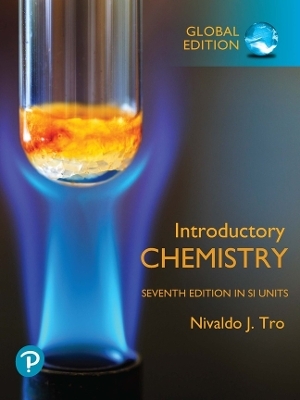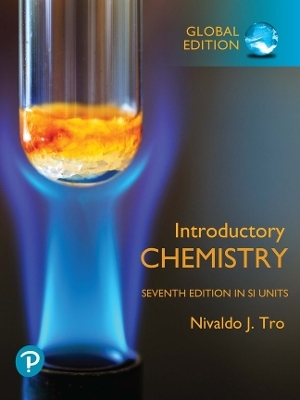
Personal Care Compounds in the Environment – Pathways, Fate and Methods for Determination
Wiley-VCH Verlag GmbH (Hersteller)
978-3-527-61021-1 (ISBN)
- Keine Verlagsinformationen verfügbar
- Artikel merken
Here, the most important classes of toxic chemicals from personal care compounds are systematically covered, from cosmetics to plastics additives to pharmaceuticals. For each substance, data on toxicity and bioaccumulation in various ecosystems are given. This first comprehensive treatment of personal care environmental toxins is rounded off by a discussion of strategies in wastewater treatment to control and remove these substances.
Kai Bester is Professor for Analytical and Environmental Chemistry at the University of Duisburg-Essen, Germany. He studied chemistry at the University of Hamburg, obtaining his PhD in 1995. Before joining the University of Duisburg-Essen, he worked as a post-doc at the Technical University of Aachen and at the University of Dortmund. Professor Bester's primary research interests focus on the environmental contamination by antibiotics, fragrances and flame retardants as well as pharmaceuticals, and their analysis by mass spectrometric methods.
Preface.Acknowledgments.List of Contributors.List of Abbreviations.1 Introduction.1.1 General Considerations (Kai Bester).1.2 Introduction to Sewage Treatment Plant Functions.1.3 Enantioselective Analysis in Environmental Research.1.3.1 Enantioselective Gas Chromatography Techniques.1.3.1.1 Applications of Enantioselective Gas Chromatography.1.3.1.2 New Developments.1.3.2 Enantioselective HPLC.1.3.2.1 Applications of Enantioselective HPLC.2 Environmental Studies: Sources and Pathways.2.1 Synthetic Fragrance Compounds in the Environment (Kai Bester).2.1.1 Polycyclic Musk Fragrances in Sewage Treatment Plants.2.1.1.1 Experimental Background.2.1.1.2 Mass Balance Assessment.2.1.1.3 Multi-step Process Study on Polycyclic Musks.2.1.2 Polycyclic Musk Fragrances in Diverse Sludge Samples.2.1.3 Polycyclic Musk Fragrances in Surface Waters.2.1.3.1 Experimental Methods.2.1.3.2 Results and Discussion.2.1.4 Polycyclic Musk Fragrances in the North Sea.2.1.5 OTNE and Other Fragrances in the Environment.2.1.5.1 Methods.2.1.5.2 Results and Discussion.2.1.6 Other Fragrances: Nitroaromatic Musks and Macrocyclic Musks.2.1.7 Behavior of Polycyclic and Other Musk Fragrances in the Environment.2.2 The Bactericide Triclosan and Its Transformation Product Methyl Triclosan in the Aquatic Environment (Kai Bester).2.2.1 Bactericides from Personal Care Products in Sewage Treatment Plants.2.2.1.1 Materials and Methods.2.2.1.2 Triclosan Balances in a Sewage Treatment Plant.2.2.1.3 Triclosan in Multi-step Processes in Sewage Treatment Plants.2.2.2 Triclosan in Sewage Sludge.2.2.3 Triclosan in Surface Waters.2.2.3.1 Estimation of Elimination Constants for Triclosan in a River.2.2.4 Discussion on Triclosan and Methyl Triclosan in the Environment.2.3 UV Filters/Sunscreens (Kai Bester ).2.3.1 Endocrine Properties of UV Filters.2.3.2 UV Filters in Aquatic Ecosystems.2.3.3 Enantioselective Considerations for UV Filters.2.4 Organophosphate Flame-retardants and Plasticizers ( Jens A. Andresen, Stefan Weigel and Kai Bester).2.4.1 Introduction.2.4.1.1 Flame-retardants.2.4.1.2 Organophosphate Plasticizers.2.4.2 The Organophosphate Flame-retardant TCPP in a Sewage Treatment Plant.2.4.2.1 Materials and Methods.2.4.2.2 Mass Balance Assessment for TCPP in a Sewage Treatment Plant.2.4.2.3 TCPP in Sludge Monitoring.2.4.2.4 Evaluation of the TCPP Data.2.4.3 Organophosphate Flame-retardants and Plasticizers in Multi-step Sewage Treatment.2.4.3.1 Materials and Methods.2.4.3.2 Results and Discussion.2.4.3.3 Conclusions.2.4.4 Organophosphorus Flame-retardants and Plasticizers in Surface Waters.2.4.4.1 Materials and Methods.2.4.4.2 Results and Discussion.2.4.5 Organophosphates in Drinking Water Purification.2.4.5.1 Materials and Methods.2.4.5.2 Results.2.4.5.3 Conclusions.2.4.6 Organophosphates and Other Compounds in the North Sea and Lake Ontario: A Comparison.2.4.6.1 Materials and Methods.2.4.6.2 Results and Discussion.2.4.6.3 Conclusions.2.4.7 Overall Discussion on Chlorinated Organophosphorus Flame-retardants and Other Compounds.2.5 Endocrine-disrupting Agents (Michael P. Schlusener and Kai Bester).2.5.1 Introduction to Endocrine-disrupting Effects.2.5.2 Estrogenic Hormones and Antibiotics in Wastewater Treatment Plants.2.5.2.1 Description of the Sample Sites.2.5.2.2 Results and Discussion.2.5.2.3 Conclusions.2.5.3 Nonylphenol and Other Compounds in the North Sea.2.5.3.1 Materials and Methods.2.5.3.2 Results.2.5.3.3 Discussion.2.5.3.4 Conclusions.2.6 Diverse Compounds (Kai Bester).2.6.1 Benzothiazoles in Marine Ecosystems.2.6.1.1 Materials and Methods.2.6.1.2 Results.2.6.1.3 Discussion and Conclusions.2.6.2 Enantioselective Degradation of Bromocyclene in Sewage Treatment Plants.2.6.2.1 Introduction.2.6.2.2 Methods and Materials.2.6.2.3 Results and Discussion.3 Analytical Chemistry Methods.3.1 Fresh and Wastewater (Kai Bester ).3.1.1 Lipophilic Compounds from Fresh and Wastewater (GC Analysis).3.1.1.1 Sampling.3.1.1.2 Extractions.3.1.2 Steroid Hormones, Their Adducts, and Macrolide Antibiotics from Wastewater (HPLC-MS/MS Analysis) (Michael P. Schlusener and Kai Bester ).3.1.2.1 Introduction.3.1.2.2 Experimental Methods.3.1.2.3 Results and Discussion.3.1.2.4 Conclusions.3.2 Seawater.3.2.1 Lipophilic Compounds in Marine Water Samples (Kai Bester ).3.2.2 Hydrophilic Compounds in Marine Water Samples (Stefan Weigel and Kai Bester).3.2.2.1 Experimental Methods.3.2.2.2 Results and Discussion.3.2.2.3 Conclusions.3.3 Sewage Sludges ( Jens A. Andresen and Kai Bester).4 Discussion (Kai Bester).4.1 Sewage Treatment Plants.4.2 Limnic Samples.4.3 Marine Samples.4.4 Conclusions.5 Summary (Kai Bester ).5.1 Polycyclic Musks AHTN, HHCB, HHCB-lactone, and OTNE.5.2 Flame-retardants.5.3 Endocrine Disrupters.5.4 Triclosan and Methyl Triclosan.6 References.Subject Index.
| Verlagsort | Weinheim |
|---|---|
| Sprache | englisch |
| Maße | 170 x 240 mm |
| Gewicht | 665 g |
| Themenwelt | Naturwissenschaften ► Chemie |
| ISBN-10 | 3-527-61021-9 / 3527610219 |
| ISBN-13 | 978-3-527-61021-1 / 9783527610211 |
| Zustand | Neuware |
| Informationen gemäß Produktsicherheitsverordnung (GPSR) | |
| Haben Sie eine Frage zum Produkt? |
aus dem Bereich


